 |
 |
|||||||||||||||||||||
|
||||||||||||||||||||||
Trumpeter Swan (Cygnus buccinator), Sweetwater Wetlands, Pima County
This Trumpeter Swan was
found by Bryon Lichtenhan and photographed by Andrew Core, Bill Higgins,
and Scott Olmstead on 28 January 2015
There are five accepted records for Arizona, three of
which are from southeastern Arizona: singles in Portal (1994) and Gleeson (1998), and the family group of six at Kino Springs and the Corona de Tucson WTP (2006).
Tundra and Trumpeter Swans are surprisingly
difficult to identify. However, these birds show several
characters supporting the Trumpeter Swan identification.
Perhaps the best way to distinguish adult swans (other
than voice) is the shape of the feathering on the
forehead. These birds show V-shaped feathering typical
of adult Trumpeter Swan, rather than the U-shaped
feathering typical of adult Tundra Swan and immatures of
both species. Most adult Tundra Swans have a yellow
loral spot, but 1-2% lack such a spot. These birds lack
this spot, although one does show a gray patch on the
upper bill, possibly indicative of a younger age. Typical Trumpeter Swans have a straight edge down
from the eye between the facial skin/ramphothecum and
the feathers, whereas in Tundra this is more curved or
kinked, but there is variation in this trait. These
birds have a salmon-colored grin streak which is always
present in Trumpeter Swan, less often in Tundra.
Finally, Tundra Swan usually, but not always, has a
narrow strip of black loral facial skin that makes the
eye seem separate from the black bill. Most Trumpeters
have wider facial skin that makes the eye seem visually
part of the bill. These two birds show the variation in
this trait, and other nuances of bill shape, that can be
shown by Trumpeter Swans.

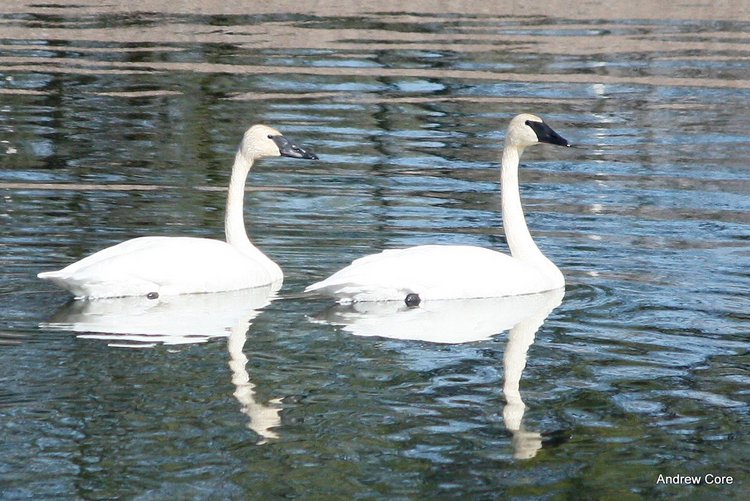
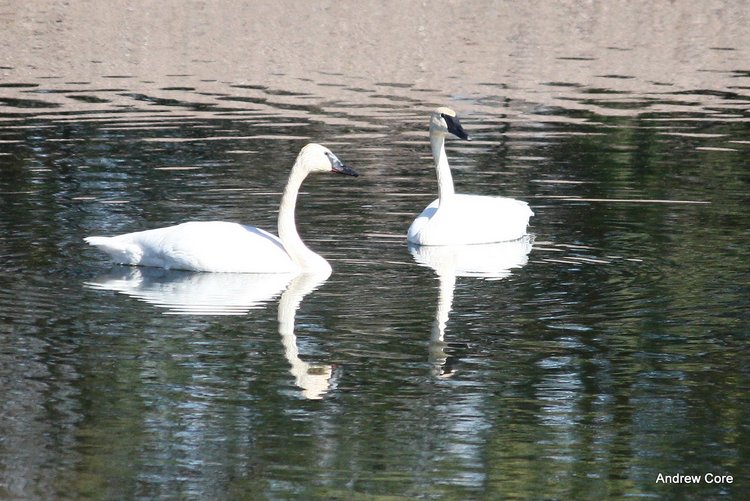
28 January 2015, photo by Andrew Core
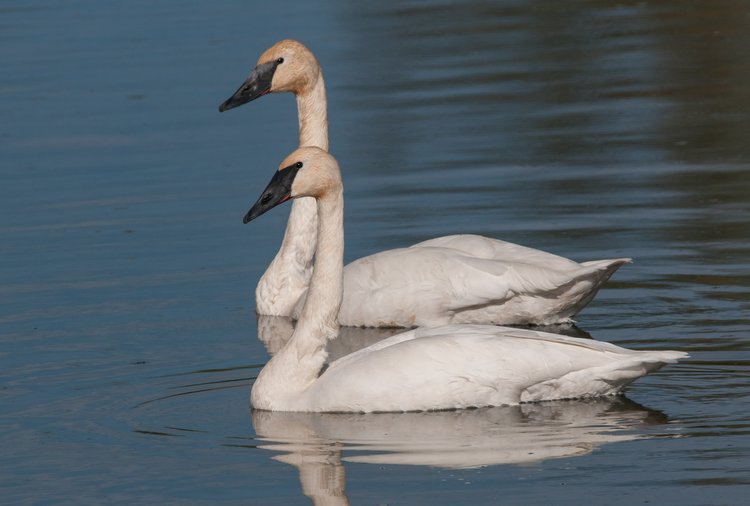
28 January 2015, photo by Bill Higgins
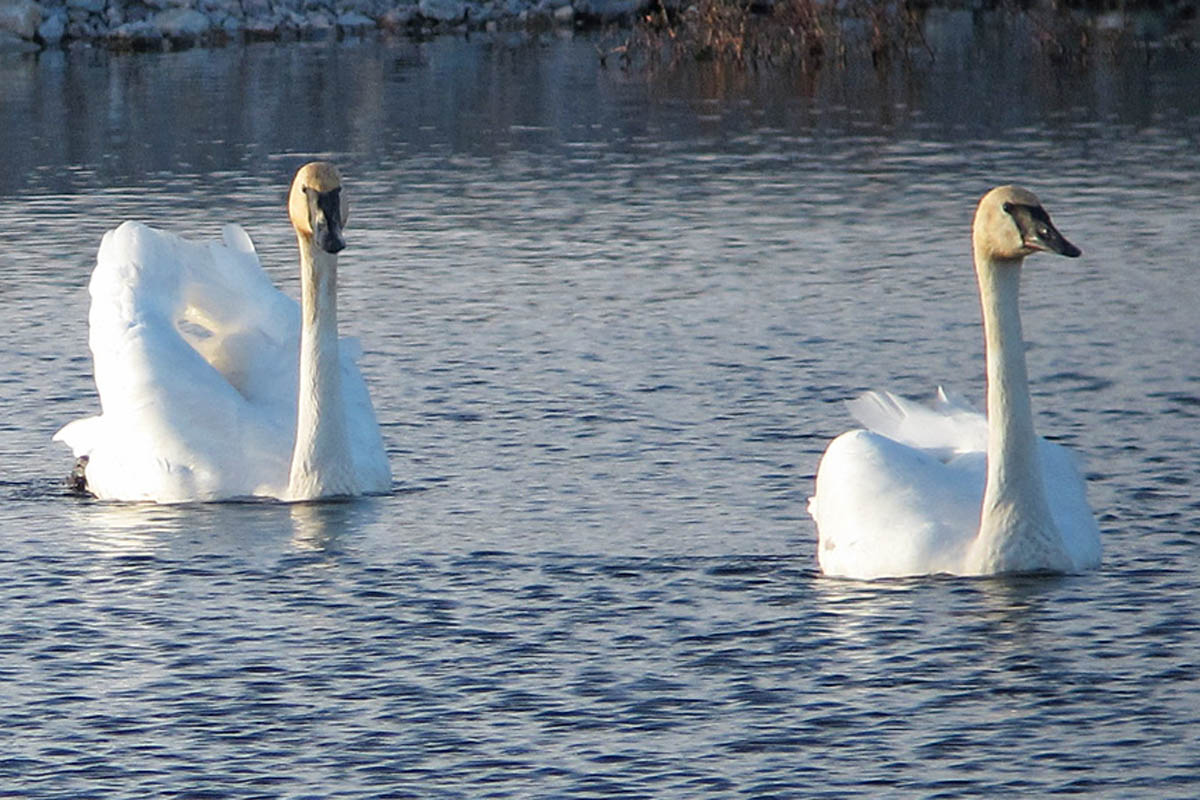
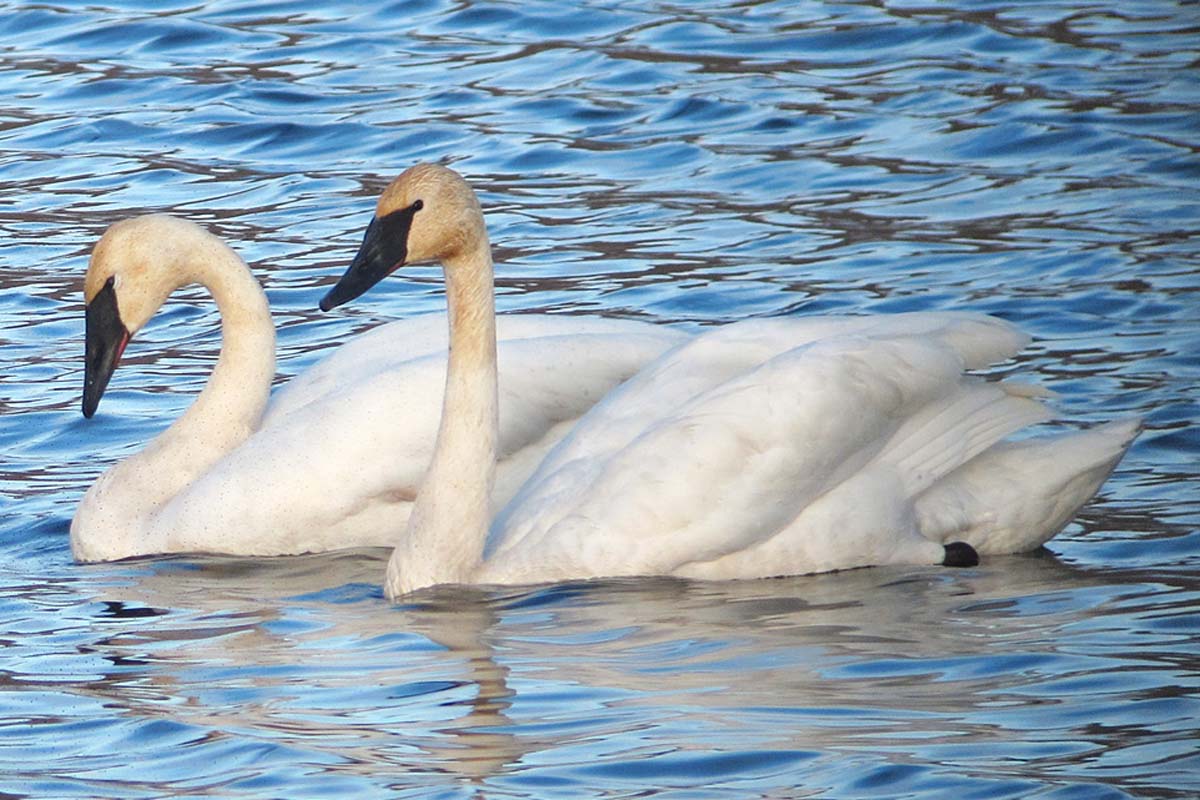
28 January 2015, photo by Scott Olmstead
All photos are copyrighted© by photographerSubmitted on 28 January 2015
|
©2005
|
HOME | | | REPORT SIGHTINGS | | | PHOTOS | | | BIRDING | | | JOURNAL | | | ABOUT US | | | CHECKLISTS | | | AZ BIRD COMMITTEE | | | EVENTS | | | LINKS |